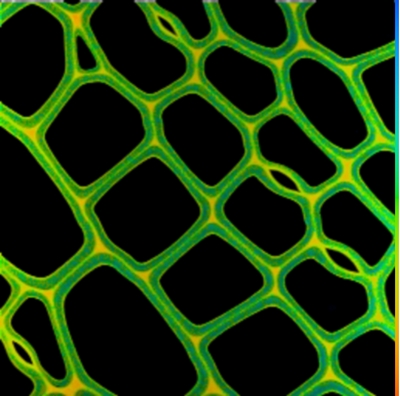Lignin: the hidden forest product

Forest products collectively make up New Zealand’s third largest export earner. The main forestry wares are wood pulp, raw logs or sawn timber, topped up with a range of paper, paperboard, panel and secondary manufacturing products. Chemicals hidden inside the wood are expected to form the basis of future forest products that could replace those derived from non-renewable resources. Scion scientists have their eye on lignin as a potentially valuable candidate.
Lignin is the second most abundant polymer on earth and plays a key role in wood structure. It is so hidden within the tree that a powerful microscope is needed to see it. Currently obtained as a by-product of the pulping process, lignin is mainly used in New Zealand to generate heat for industrial energy. Research programmes are focused on extracting and modifying lignin for other uses, including biofuels, bioplastics, rubber replacements and new materials.
Using specialised microscopy techniques, Scion scientist Dr Lloyd Donaldson is gaining greater in-sight into lignin’s composition and properties. He has received an award from the prestigious Charles Fleming Fund to develop collaborative relationships with other global specialists at the forefront of plant science. He will use this award to conduct a research project in Adelaide using a technique called Fluorescence Lifetime Imaging (FLIM).
“This technique can be used to measure chemical properties of lignin and can also be used to measure interactions between lignin and other cell wall components,” Lloyd explains. “Findings from these experiments will aid the development of novel wood-based materials including the production of biofuels from wood.”
The experiment is part of a wider project that includes microscopy experts at the University of Leeds in England and the University of Belgrade in Serbia, who are equally interested in unlocking the hidden potential of plants.
Want to know more?
CONTACT: Elspeth MacRae
EMAIL: Show email
Lignificiation magic
Dr Armin Wagner and his team at Scion have created genetically-modified lines of radiata pine that differ in how they express a particular enzyme. In their research, they effectively switched the enzyme on or off and were able to modify both the type of lignin and the quantity laid down in the cell wall. This result demonstrates that the lignification process is able to be modified, providing fundamental knowledge for the development of feedstocks for biomaterials or biofuels. Their results have appeared in the leading plant science publication, The Plant Journal.
< Previous Article | Contents | Next Article >
